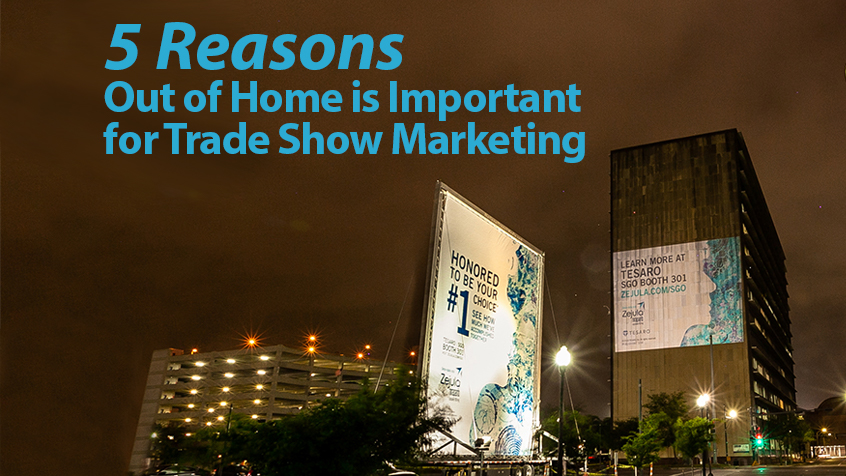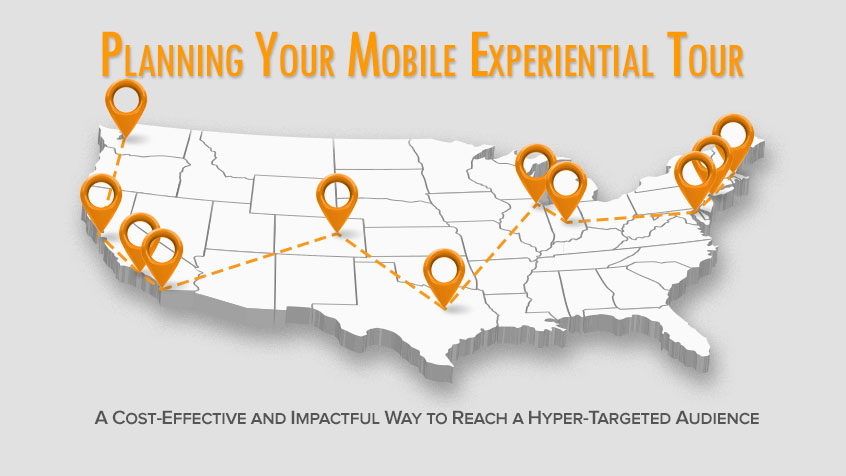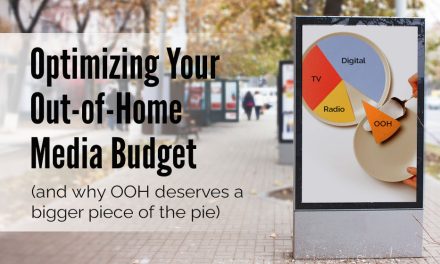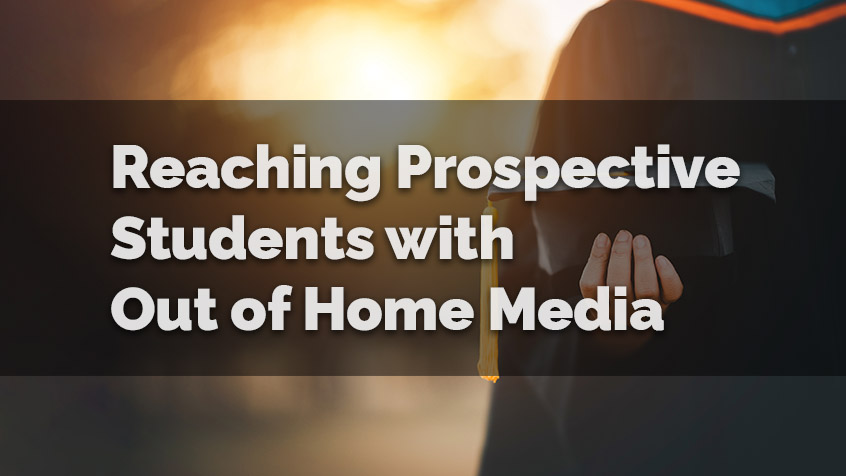Trade show marketing is a valuable strategy for helping brands and advertisers attain key business goals and metrics. It presents an opportunity to deliver campaigns that will increase brand awareness and visibility, generate sales and leads, showcase new products and services, engage with an audience and industry, and support other objectives.
Brands across all industries spend time and money preparing and participating in trade shows with a typical focus on designing and building elaborate exhibit booths. In fact, trade show marketing and event marketing are, historically, the largest budget items for B2B marketers. Studies show that they account for 20% of marketing budgets, and that they are among the most profitable B2B media strategies in the US, generating more than $12.8 billion.
While most marketers are knowledgeable of the benefits of trade show marketing, they overlook one key element: advertising outside of the convention center. By leveraging advertising opportunities outside the trade show floor and convention venue, brands can implement a more complete and more effective trade show strategy.
Advertising outside the trade show
On average, trade show visitors spend 9.5 hours viewing exhibits. So, what happens during the rest of their time? Attendees are outside the convention space. This offers prime opportunity for attendees to engage with your brand’s messaging with external and perimeter advertising. Approximately 81% of trade show attendees have buying authority, so visibility and impact of brand messaging is crucial.
Thinking about the attendee journey, brands can create multiple touchpoints. When an audience comes into the market, they make their way downtown from the airport and circulate between the hotels, convention center, restaurants and local attractions. With the right approach and plan—considering where that attendee journey intersects with potential physical touchpoints—reaching attendees outside the trade show space can deliver high quantity and high-quality impressions.
With this 360-degree approach, brands can:
- Increase the marketing footprint
- Enhance brand engagement
- Sustain brand awareness throughout the trade show
- Drive foot traffic to the booth.
So, why does advertising beyond the trade show accomplish these critical business goals?
1. It creates a memorable impression with attendees.
A principle in psychology, referred to as latency and primacy, supposes that people remember things they see at the beginning and end of an experience, presentation, or list. This principle can be applied to trade show marketing, too. Advertising beyond the trade show floor allows your message to be the first and last one attendees receive when they are in market.
Airports are the gateways to convention markets and offer advertising solutions to welcome attendees and bid them farewell. You can create a valuable lasting first impression and unique personal connection, all with strategically placed and relevant messaging.

2. It makes the most of your trade show dollars.
Companies spend large amounts of money to exhibit at trade shows. The typical trade show expenses include display costs, set up fees, travel and shipping costs, staffing, promotional items and giveaways, and other intangible costs. In contrast, an out of home campaign running outside the conference can be a relatively modest or lower cost option with a comparable impact.
New exhibitors can benefit greatly from out of home and experiential activations around a convention market. Unlike big companies that have large and established booths, new brands are often forced to get more creative with their visibility tactics. Advertising outside a trade show can make new exhibitors appear to be more prominent. They can create the impression of a large brand and increase brand awareness at a lower cost-per-impression.
Advertising outside a trade show adds an element of frequency and repetition. This supports a more comprehensive trade show marketing campaign. When you deliver your message ten times more than your competitor, you increase your odds of creating a lasting impression. By design, out of home formats provide repeated messaging opportunities throughout a market that increases brand awareness.
3. It allows you to stand out from the inside crowd.
Most trade show exhibitors concentrate on booths, banners, swag items, and engagement inside the convention floor. Consequently, regarding critical share of voice (SOV), there is high competition inside with all brands competing for the same attention of attendees.
Advertising outside a trade show gives you a competitive edge. OOH media around a trade show is often overlooked by the exhibitors and sponsors of that show. Studies show that 92% of attendees are searching for new products, and it’s differentiation that will lead them to attention for one versus another. OOH media gives messaging room to breathe away from the clutter of competitors, thus creating a bigger impact.

4. It provides scalability and flexibility.
Advertising outside the trade show combines OOH and experiential media to give exhibitors a broad palette. You can use traditional and nontraditional OOH formats located at street-level around the market—taxi tops, wrapped rideshare, transit shelters, etc. Plus, each is scalable to meet brand objectives.
Brands that are launching a new product can paint the town in their brand colors and messaging. For more mature products, you can scale appropriately in the other direction. The bottom line is to target attendees while they are open to messaging and moving in and around the market.
Combining various OOH formats helps to establish a unique, memorable, and effective campaign that targets the audience and reaches them multiple times. Since OOH is location-based, it can easily “follow” attendees based on their behaviors in the market.
Additionally, experiential marketing allows brands to create a more personal, emotional connection with attendees. Exhibitors can increase chances to connect with prospects while extending in-booth activities into a larger space.
Most importantly, it’s the integration of multiple out of home tactics that allows brands to scale and tailor a campaign to drive brand goals. Depending on needs and objectives, the greater the scale of trade show, audience or market, the more opportunities there are for available media options.
5. It garners a holistic marketing approach.
Among the primary benefits of convention marketing is that it targets an audience from around the globe who are converging in one place to learn and share for a few short days. Advertising outside the trade show is an impactful way to reach this captive audience. This more concentrated target audience will see your message and take some desired action to engage your brand, visit your booth, or go to your website, etc.
Trade show advertising has numerous benefits for exhibitors ranging from generating quality leads to increasing brand awareness and attracting new customers. However, brands should not focus solely on trade show marketing within the constraints of the show floor, they should look beyond the booth.
Since attendees devote a substantial amount of time outside the convention space, brands can capitalize on better share of voice by reaching them in creative and relevant ways. This strategy will help brands stand out from their competitors while providing an opportunity for memorable impressions with attendees.
Contact Us to learn more.





